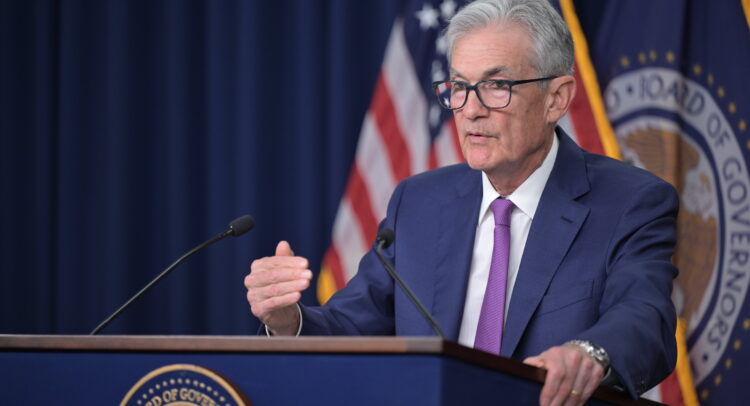The data the Federal Reserve prefers to decipher as an indicator of inflation is Personal Consumption Expenditures (PCE), especially as it continues to grapple with the delicate balance between employment stability and inflation control. Despite recent hawkish speeches, policymakers remain optimistic about inflation falling this year, even though there is a bustling labor market.
Discover the Best Stocks and Maximize Your Portfolio:
- See what stocks are receiving strong buy ratings from top-rated analysts.
- Filter, analyze, and streamline your search for investment opportunities with TipRanks’ Stock Screener.
This optimism does not necessarily translate into decisive actions in response to the Fed’s expectations. After all, the Fed insists that it is “data-driven,” and more data is constantly unfolding.
Fed Policymakers’ Inflation Expectation
Federal Reserve policymakers anticipate a decline in inflation this year, even as the labor market remains strong.
They have maintained the policy rate at 5.25%-5.5% since July 2023, and their expectations have not prompted any urgency to change this stance. Easing before a victory is in sight may prolong that win.
Fed Officials’ Divergent Views on Rate Cuts
One non-voting policymaker, Dallas Fed President Lorie Logan, has expressed concerns about upside risks to inflation, and she emphasized the importance of keeping all options on the table. Logan believes it is too early to consider rate cuts, highlighting the need for flexibility in monetary policy as the Fed monitors economic data.
New York Fed President John Williams and Chicago Fed President Austan Goolsbee have shared their divergent views on the potential timing of rate cuts. While Williams sees ample evidence that current policy is restrictive and helping to bring inflation down, Goolsbee questions whether further improvements in inflation will require higher interest rates.
Economic Growth and Inflation Progress
The U.S. economy grew at a 1.3% annualized pace in the first quarter of 2024, slower than previously estimated. Policymakers are closely monitoring inflation progress, with the PCE data scheduled for release on the last day of May. The PCE is expected to rise by 2.7% in April compared to a year ago.
Key Data Points and Policy Meeting Expectations
The upcoming June 11-12 monetary policy meeting will provide further insight into the Fed’s vision and related stance on rate cuts. Policymakers are anticipated to revise their earlier forecast of three rate cuts this year, considering that a rate reduction is unlikely. They may also suggest that the next rate adjustment could be an increase.
In a recent speech, Atlanta Fed President Raphael Bostic stressed the importance of allowing data and information to determine the timing of rate cuts. Reflecting the uncertainty about future economic conditions, Fed officials have stopped predicting when the first rate cut might occur.
Key Takeaway
The Federal Reserve remains cautious in its approach to monetary policy, focusing on achieving a balance between inflation control and employment stability. With divergent opinions among officials and ongoing economic uncertainties, the Fed’s future actions will depend on the data and the evolving economic landscape.









